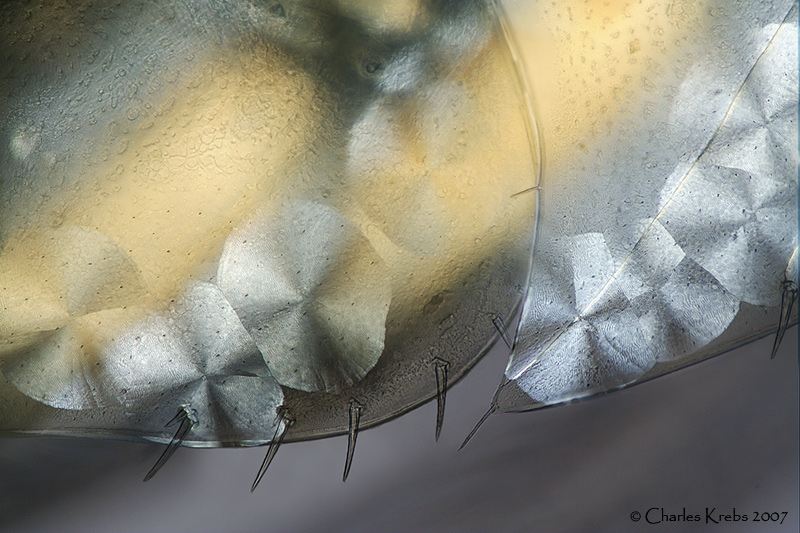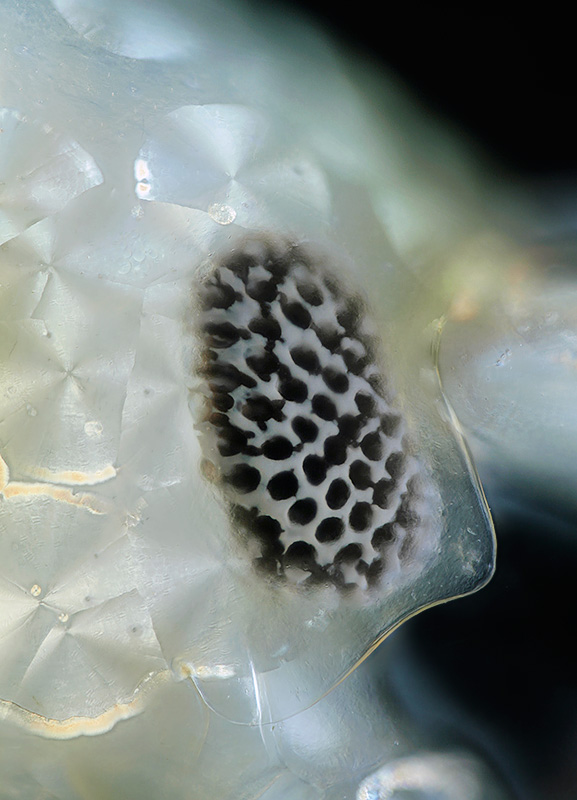I have played around with crystals of waxy films, both professionally and for fun. If you look at my pages at
http://www.gpmatthews.nildram.co.uk/mic ... xtals.html
you can see at the bottom of the page some pictures of PEG3350 and a film of Gelucire 44/14, an amphiphilic wax. Both these show similar rosette structures in polarised light and the Gelucire shows maltese cross markings. Similar structures can also be seen in films of fatty alcohols and many other waxes. This appears due to the fact that waxes crystallise in spherules, which in films are constrained to be flat discs. Starches show a similar radial structure. I wonder whether the structures seen in the amphipod are due to a layer of waxy material, or whether they are characteristic of the chitinous exoskeleton. If the latter, it may be that deposition of chitin is different in salt water, if the former, it may be a specific adaptation to the salty environment. It would be interesting to compare other creatures...
The meeting of the rosettes show flattened boundaries. This suggests that the material grew on the chitinous substrate until it met its neighbouring rosette. Hence the substrate would exist before the observed structures were formed. This would support the wax-film hypothesis.
All speculation, I'm afraid, but you may find it interesting to prepare films of waxes by melting a speck between a slide and coverslip, then cooling (rate of cooling can be important) and examining in polarised light.


